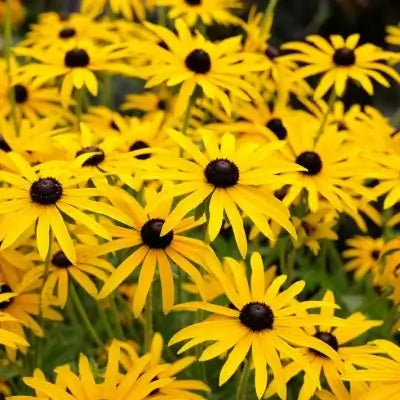
perennial plants for sales
Attracts beneficial garden pollinators
Thrives in shady garden areas
Supports sustainable gardening practices
Thrives in
ZONE 3ZONE 4ZONE 5ZONE 6ZONE 7ZONE 8Planting Season:
Year-RoundWhen you add one plant to cart, it automatically adds the second one free on Bogo deals.
The Goldenseal Plant is a woodland perennial herb with distinctive lobed leaves and small, greenish-white flowers that give way to bright red berries. It is valued for its properties and has several advantages in landscaping projects. This perennial belongs to the Ranunculaceae family and is renowned for its medicinal properties and striking appearance.
It is popular with gardeners for its foliage and flowers. Its botanical name is Hydrastis Canadensis, but it's also called Yellowroot, orangeroot, yellow eye, ground raspberry, and yellow puccoon. It's native to North America and can be found across Vermont into Georgia and as far southwest as Arkansas. It's also grown in the Blue Ridge Mountains. Hydrastis Canadensis is part of the buttercup or Ranunculaceae family, and it gets many of its names from its yellow or golden rhizomes and pale yellow sap.
It reaches a height between six and 20 inches. It's characterized by its tiny white flowers that are comprised of stamens and pistols rather than petals. The flowers typically bloom in May and are framed by two leaves with three to seven lobes. The Hydrastis Canadensis is categorized as a perennial herb that develops small, red berry-like fruit. In nature, it's typically found in wooded forests, along hillsides, and in valleys.
Birdwatchers and individuals looking to create gardens that benefit insects will appreciate it. Hydrastis Canadensis primarily attracts birds, squirrels, and bees, especially honey bees. Squirrels, birds, and other small animals love to eat the berries and seeds that form in late summer.
It thrives in shady areas. Gardeners will have the best success planting it around and under trees and large shrubs in shadier areas of their yards. It also works well in herb and flower gardens.
Gardeners prefer to put Hydrastis Canadensis around sugar maple trees, walnut trees, oaks, basswood, white ash, and poplars because it grows well in places without direct sunlight. Additionally, it does well near trout lilies, bloodroot, mayapples, and spring beauties.
It Prefers Shade
It offers many benefits to home gardeners. It's beloved for its white flowers, yearly blossoming, and ability to grow in areas where other flowers may fail to thrive, like under large shade trees. Hydrastis Canadensis also does well in flower gardens and birdwatching gardens.
What is this native like
It is a perennial with lurid green leaves and a white flower that develops into a red fruit. Because of its showy leaves, it's a beautiful perennial for shade and Wwoodlandbeds.
Where does it grow best
It does best when grown in part-shade, good-quality, fertile, draining, and moisture-storing soil. It is indigenous to North American forests and does well in the same conditions in the home garden.
Is it easy to grow
It is not that difficult to grow, given the right environment. Remember to water and mulch for extra moisture; it favors shade.
Can it be grown indoors
You can even grow it indoors. Place the pot in the shade, make sure the soil is dry, and keep it continually moist so it will do well.
Where to plant it
Goldenseal plant looks great in woodland or natural gardens. With its green leaves and small red berries, it is a versatile perennial for any gardening design.

Bloom Season
Summer
Bloom/Foliage Color
White
Height at Maturity
Under 12"
Care
Goldenseal thrives in well-drained, rich soil. Keep it evenly moist but not soggy. Fertilize sparingly in early spring. Protect from extreme temperatures and pests. Harvest roots in the fall, ensuring the plant has matured for optimal potency.
Plant Reproduction
Goldenseal plant spreads by growing its rhizomes and fibrous roots into the surrounding area.
Shipping date depends on the date displayed and chosen when you order from the product's page.
We only accept returns on plants verified dead. If you think your plants have died, we offer a 1 year warranty, please use use this File a Claim Link to verify dead plants and start with return warranty process.




Perennial Herb:
Develops small, red berry-like fruit and thrives as a perennial herb.
Bird and Animal Attraction:
Attracts birds, squirrels, and bees, especially honey bees.
Companion Planting:
Grows well with sugar maple trees, walnut trees, oaks, basswood, white ash, and poplars.
Shady Area Growth:
Can grow in areas where other flowers may fail, like under large shade trees.
Caring Tips
Each box contains detailed care instructions and information about your product. But here's the basics.
Care Tips
Goldenseal thrives in well-drained, rich soil. Keep it evenly moist but not soggy. Fertilize sparingly in early spring. Protect from extreme temperatures and pests. Harvest roots in the fall, ensuring the plant has matured for optimal potency.
Light Requirements
The Goldenseal plant thrives in partial to full shade. It prefers filtered sunlight or dappled shade, mimicking the forest floor conditions of its native habitat. Avoid total sun, as it can cause leaf scorch and inhibit growth.
Hardy Planting Zones
3 • 4 • 5 • 6 • 7 • 8
How often should I water my plants?
How do I know if my plant is getting too much or too little sunlight?
What should I do to prepare my plants for winter?
What are the signs that my plant needs fertilizing?
How can I prevent pests from damaging my plants?
How do I choose the right plant for my climate zone?